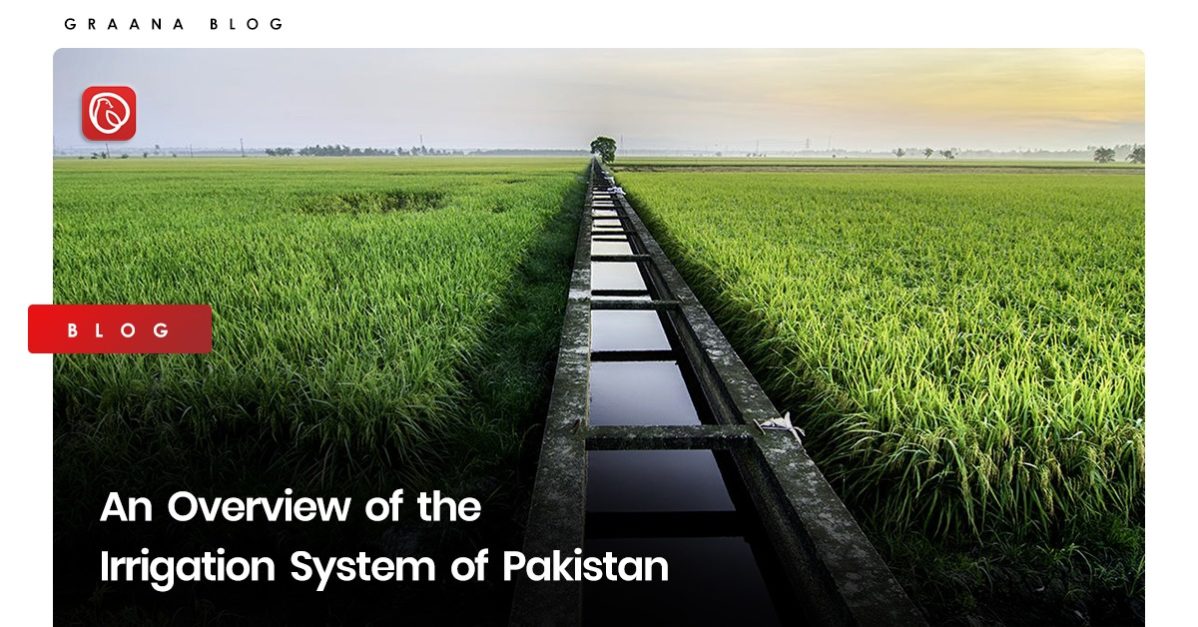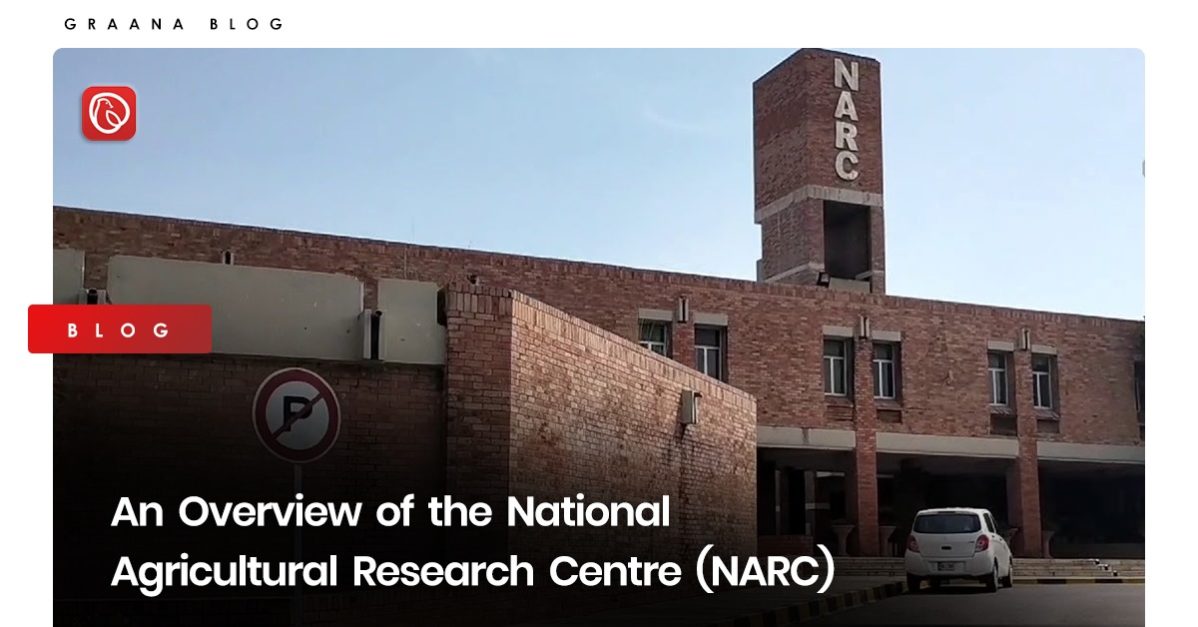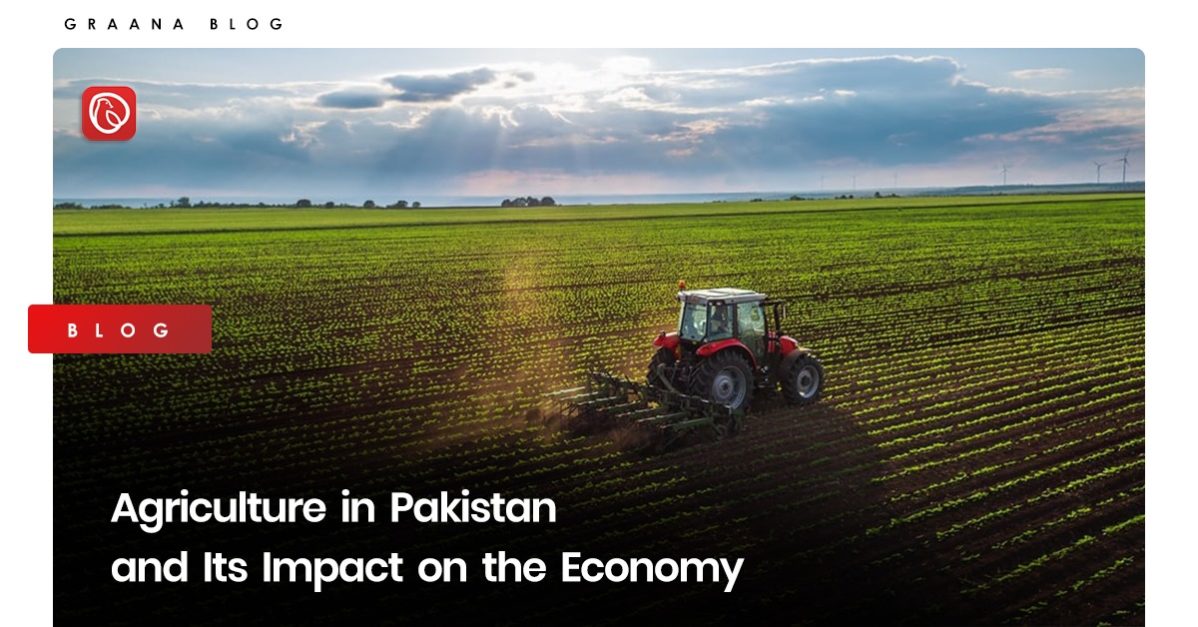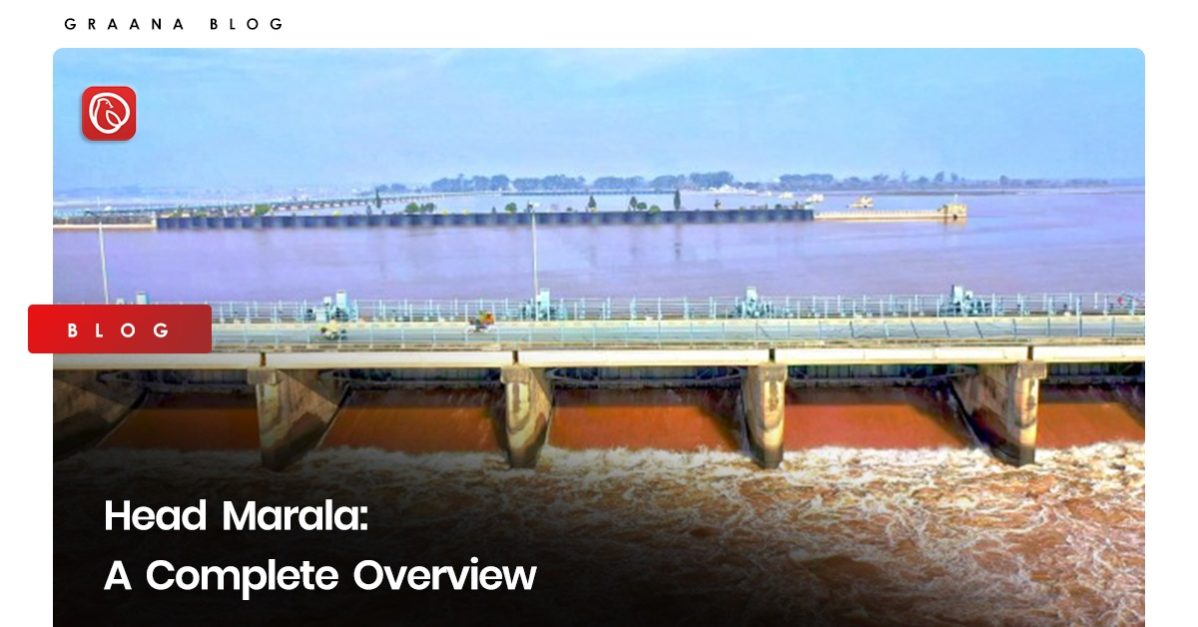Irrigation is the lifeline of agriculture in Pakistan, with the Indus River and its tributaries serving as the primary sources of water. However, water scarcity and mismanagement represent major problems in Pakistan’s irrigation system.
Graana.com takes a closer look at the irrigation system of Pakistan, including its history, current state, and future challenges.
History of Pakistan’s Irrigation System
The history of irrigation in Pakistan dates back to the Indus Valley Civilisation in 2500 BCE. The ancient civilisation built a sophisticated system of canals and dams to irrigate crops. The system was based on the natural flow of the Indus River and its tributaries.
During the British colonial period, the irrigation system was expanded and modernised. The British built large dams and canals to increase the amount of water available for irrigation. The construction of the Sukkur and Taunsa Barrage in the 1930s was a major achievement during this period.
After the independence of Pakistan in 1947, the government continued to invest in the irrigation system. The construction of the Tarbela Dam in the 1970s and the Mangla Dam in the 1960s were major milestones in the expansion of the irrigation system.
Current State of the Irrigation System of Pakistan
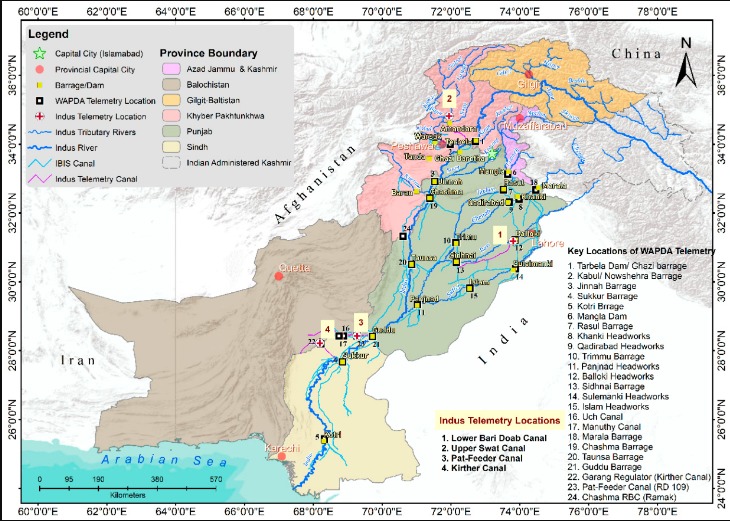
Today, the irrigation system of Pakistan is one of the largest in the world. It covers an area of over 16 million hectares and provides water to the country’s farms. The system is based on a network of canals, dams, and reservoirs that are fed by the Indus River and its tributaries.
The Indus Basin Irrigation System (IBIS) is the largest component of the irrigation system. It is made up of three main canals: the Indus River itself, the Left Bank Outfall Drain (LBOD), and the Right Bank Outfall Drain (RBOD). The IBIS provides water to over 8 million hectares of land.
The irrigation system also includes several smaller systems, such as the Chashma-Jhelum and the Taunsa-Panjnad systems. These systems provide water to an additional 4 million hectares of land.
The Indus River System Authority (IRSA) manages the irrigation system, and is responsible for water distribution among the provinces. The IRSA also oversees its maintenance and repair.
Irrigation Sources of Pakistan
The irrigation system relies on several sources to provide water to the country’s farms which are as follows.
Surface Water
The primary source of water is the Indus River and its tributaries, which flow through the country and provide water to the IBIS. This provides water to some of the most fertile and productive agricultural regions in Pakistan.
Ground Water
Another major source of water for irrigation in Pakistan is groundwater. The country has a large number of underground aquifers that are tapped using tube wells. Tube-well irrigation is widely used in Pakistan, especially in areas where there is a shortage of surface water.
The tube wells are used to pump water to the surface for irrigation, and this method has been instrumental in increasing crop yields in the country.
Dams and Reservoirs
The country has several large dams, such as the Tarbela Dam and the Mangla Dam, which are used to store and regulate the flow of water for irrigation. These dams also provide hydroelectric power and help control flooding.
Canals
Canals are also an important source of water for irrigation. The country has a large network of canals that are used to transport water from dams, rivers, or other sources to the fields. Canal irrigation is more efficient than flood irrigation, but it can be expensive to construct and maintain.
Importance of Rivers in Pakistan’s Irrigation System
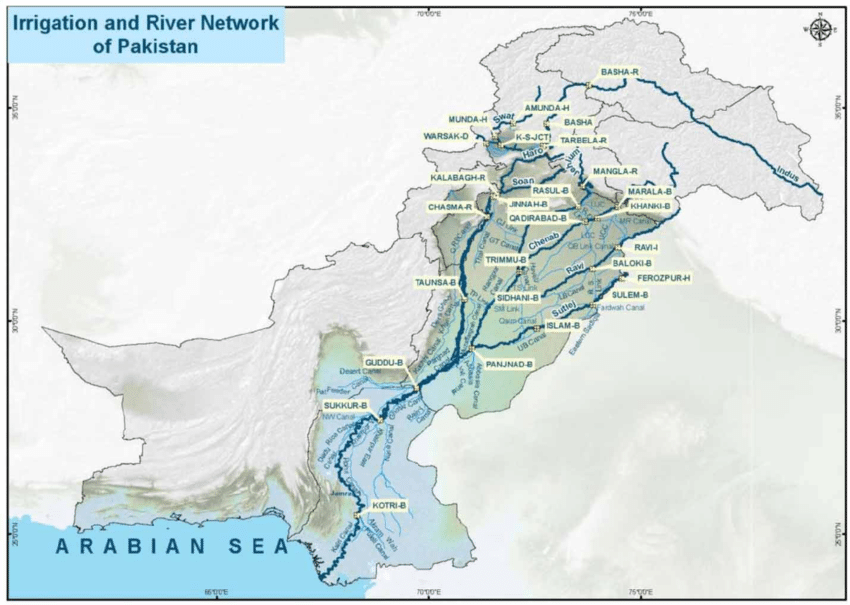
The irrigation system is heavily dependent on the country’s rivers, which provide the primary source of water for agriculture. The Indus River and its tributaries are the main rivers of Pakistan that feed into the irrigation system and play a crucial role in the country’s agricultural sector.
Indus River
The Indus River is the longest and most important river in Pakistan. It originates in Tibet and flows through the Himalayas, the Karakoram Range, and the Hindu Kush before entering Pakistan. The river then flows through the country, providing water to the IBIS.
Jhelum River
The Jhelum River is another important tributary of the Indus River. It originates in Indian-administered Kashmir and flows through Pakistan, providing water to the Jhelum-Chenab Link Canal, which is a major component of the irrigation system.
The canal provides water to over 1 million hectares of land and is particularly important for the cultivation of wheat, sugarcane, and other crops.
Chenab River

The Chenab River is also a major tributary of the Indus River. It originates in the Himalayas and flows through Pakistan, providing water to the Chenab River Irrigation System. The system covers over 2 million hectares of land and is particularly important for the cultivation of rice, cotton, and other crops.
Ravi River
The Ravi River originates in India and flows through Pakistan, providing water to the Ravi-Beas Link Canal, which is a major component of the irrigation system. The canal provides water to over 1 million hectares of land.
Sutlej River
This river originates in Tibet and flows through Pakistan. It provides water to the Sutlej-Beas Link Canal and provides water to over 1 million hectares of land, which is especially significant for the cultivation of wheat, sugarcane, and other crops.
In addition to these major rivers, there are also several rivers and streams that provide water to the irrigation system. These include the Kabul River, the Swat River, and the Chitral River.
Future Challenges in the Irrigation System of Pakistan
The irrigation system of Pakistan faces several obstacles, some of which are mentioned below.
Water Scarcity
One of the biggest challenges facing the irrigation system in Pakistan is water scarcity. The Indus River and its tributaries are heavily dependent on snowmelt and monsoon rains, which can be unpredictable.
Droughts and floods are common, and both can have a severe impact on the irrigation system. The over-extraction of water from these rivers for irrigation, urbanisation, and industrial use is also causing the depletion of water resources.
Deterioration of Infrastructure
The infrastructure, including canals, dams, and reservoirs, plays a crucial role in distributing water to the fields, and its proper functioning is essential for the efficiency of the irrigation system. However, due to a lack of maintenance and investment, many of these structures are in poor condition and in need of repair. This can lead to water losses through leaks and breaches, thus leading to reduced crop yields.
Furthermore, the inefficiency of the irrigation systems causes water to be wasted, which can result in the over-irrigation of certain areas and the under-irrigation of others. Also, the over-extraction of water from the irrigation systems can deplete the water resources and can cause a negative impact on the surrounding environment.
Climate Change
Climate change is also a growing concern for the irrigation system of Pakistan. Rising temperatures and changing precipitation patterns can lead to more droughts and floods, which can further strain the system.
The changes in the precipitation patterns can affect the timing and amount of water available for irrigation. This can lead to crop failures and food insecurity.
Mismanagement
Another problem facing the irrigation system is mismanagement by the relevant authorities. There have been instances where the distribution of water has been unequal and unfair, leading to conflicts between provinces and farmers.
Lack of Modernisation
The irrigation systems have been in use for many years and have been instrumental in supporting the country’s agricultural sector. However, many of these are outdated and have not been modernised to improve efficiency.
Lack of Financing
The irrigation system is in need of significant funding to address related problems. The lack of financing can limit the ability to repair and maintain the infrastructure, upgrade the systems and build new dams, canals, and reservoirs.
The Way Forward
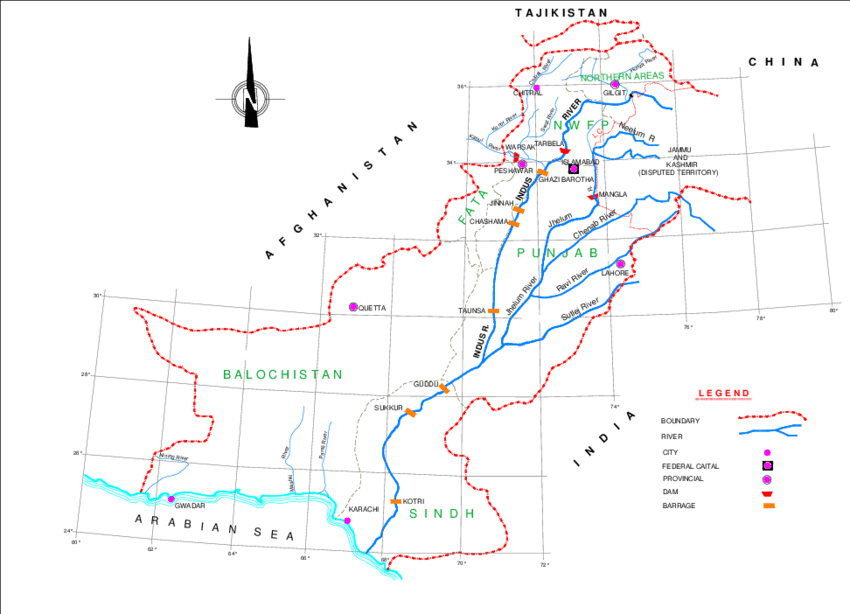
The Indus Basin system in Pakistan is facing multiple challenges. It includes seepage from unlined canals, waterlogging, soil salinisation, poor water management practices, insufficient water supplies, and the use of poor-quality groundwater for irrigation.
These factors threaten the sustainability of irrigated agriculture in the region. With a growing population, the need for increased food production is paramount. However, with limited investment in the water sector coupled with environmental and ecological threats, the expansion of irrigation areas is unlikely.
To address these issues and improve the sustainability of the irrigation system, increasing water availability through new storage and infrastructure development, as well as improving agricultural water productivity through conservation technologies and efficient irrigation systems, are essential steps forward.
Apart from improving the infrastructure, there is a need for a more flexible water economy. This means reallocating water from less demanding sectors to more demanding sectors. This requires investments in institutions that can effectively address the challenges of water management, including legislative and organisational changes to address entitlement, pricing, and regulatory issues.
Conclusion
The irrigation system of Pakistan is a vital component of the country’s economy. It provides water to the country’s farms and supports the livelihoods of millions of people.
However, the system faces several challenges, including depletion of water, deterioration of the infrastructure, and the impacts of climate change. Addressing these challenges will be crucial for the long-term sustainability of the irrigation system and the country’s agricultural sector.
To know more about agriculture in Pakistan, visit Graana blog.
